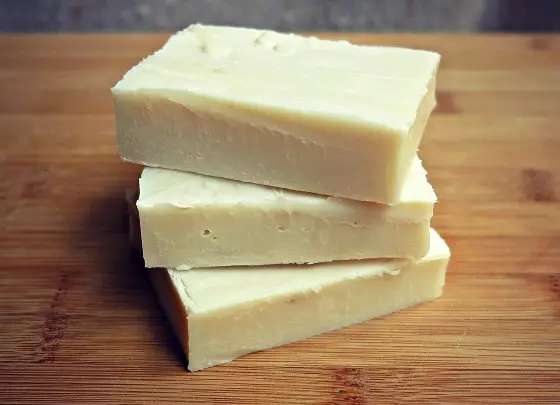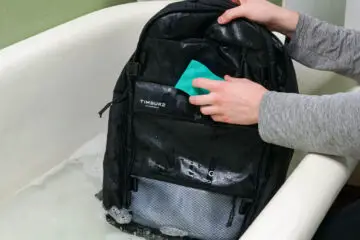As a musician, I know how important it is to keep your instrument in pristine condition. A key part of that is making sure your instrument case stays clean as well. Fabric instrument cases can easily collect dirt, grime, and even mould if not cared for properly.
In this comprehensive guide, I’ll walk you through the best practices I’ve learned over my years of touring and recording to keep your fabric instrument case in tip-top shape. We’ll cover everything from quick spot cleaning to deep cleaning methods using specialty solutions.

Why It’s Critical To Keep Your Case Clean
Before we dive into the cleaning techniques, let’s review why a clean instrument case matters in the first place:
- Prevent Damage: Dirt and debris can actually scratch the surface of your instrument if left to grind away in a dirty case. Lint and fabric particles are notorious for this.
- Avoid Mold: Mold spores love dark, humid environments like instrument cases. A dirty case provides an ideal breeding ground for mould to take hold.
- Improve Straps & Zippers: Soil build-up can make zippers and straps function poorly over time. Keeping them clean improves the lifespan.
- Protect Your Investment: Your instrument and case are significant investments. Proper care protects that investment and improves resale value down the road.
- Enhance Appearance: A filthy case makes your prized instrument look neglected. A clean case gives off a sense of pride and professionalism.
- Improve Smell: Musty, dirty cases can create unpleasant odours. Regular cleaning keeps your case smelling fresh.
As you can see, a little case cleaning goes a long way towards instrument care. Now let’s look at the techniques and best practices.
How To Clean Your Fabric Instrument Case
1. Spot Cleaning
For light soil, your first line of defence is spot cleaning. This allows you to target problem areas as needed without fully washing the entire case.
Start by grabbing a microfiber cloth and dampening it with water. Gently blot the soiled area to lift dirt to the surface. I prefer microfiber cloths because they grab and contain debris effectively.
For tougher spots, use a gentle leather or vinyl cleaner. Apply a small amount to the microfiber cloth, then wipe the area in circular motions. This helps lift soil from the fabric’s pores.
Spot clean straps and handles too. Milky build-up on these areas comes from sweat and hand oils. Spot-clean them regularly to avoid deterioration.
Pro Tip: Check the inner lining as well. Grime often collects around the edges and seams inside. Spot clean as needed to keep inner fabric fresh.
2. Use Mild Soap and Water

When spot cleaning no longer cuts it, washing by hand with soap and water is your next best bet for cleaning instrument cases.
Choose a mild liquid hand soap rather than harsh detergents, which could degrade the fabric over time. Ivory, Seventh Generation, and Dr. Bronner’s are excellent options.
Fill a basin or sink with room-temperature water. Add a small amount of soap – a teaspoon or two is plenty. Agitate the water to create suds.
Use a soft-bristled brush to gently scrub the fabric. This lifts soil from the pores. Avoid harsh scrubbing, which can damage the fabric.
Once scrubbed, drain the soapy water and rinse thoroughly. I recommend wiping down with clean water and a microfiber cloth after rinsing to remove any leftover soap residue.
Hang or lay flat to dry. Avoid direct sun exposure, which could fade the fabric. A fan helps speed drying so moisture doesn’t linger.
3. Use OxiClean

For tougher grime or mildew smells, OxiClean is a handy cleaning booster. It works great for fabric instrument cases.
Make an OxiClean soak solution according to the package directions. Typically 1-2 scoops per gallon of warm water.
Soak the instrument case entirely in the solution for at least 30 minutes. This allows the OxiClean to penetrate and lift stains.
Remove from the bath and gently scrub with a soft bristle brush. Focus on any remaining problem spots.
Rinse thoroughly after scrubbing to remove all OxiClean residue.
4. Try Vinegar and Water
As a natural cleaning solution, white vinegar and water can sanitize and deodorize instrument cases without harsh chemicals.
Mix equal parts white vinegar and water. I’d recommend starting with 1 cup each.
Use a sponge or soft cloth to wipe down the exterior of the instrument case.
If grime remains, allow it to soak for 5-10 minutes then gently scrub. The vinegar will help break down grease and grime.
Rinse with clean water afterwards to avoid any vinegar smell lingering on the fabric.
Tip: For extra cleaning power, add a few drops of essential oil like lemon or tea tree to the vinegar solution. This adds a sanitizing boost.
5. Use Specialty Cleaners
For periodic deep cleaning, use specialty solutions formulated for instrument cases.
One of my favourites is ProTec Instrument Cleaner. Spray it on and wipe down with a microfiber cloth. It’s non-toxic and safe for all case materials.
Another great option is Monster Clean Instrument Cleaner. It cuts through dirt, dust, grease, and grime like nothing else.
No need to rinse after using these instrument cleaners. Just wipe on, allow to dry, and buff off any haze.
6. Try UV Sanitation
UV light sanitisers kill bacteria and mould spores on instrument cases without any cleaning solutions.
These sanitisers have interior lamps that bathe the case in UV-C light. The light destroys mould, viruses, and bacteria by damaging their DNA.
I recommend the ProTec UV Case Sanitizer. Just 5 minutes inside eliminates 99% of microbes. It’s a fast way to sanitize between deep cleanings.
Using UV sanitation monthly helps inhibit mould growth and keep your case’s interior hygienic.
Proper Drying Is Critical
However you clean your instrument case, proper drying is critical to avoid moisture damage.
After washing, gently blot interior and exterior fabric with a microfiber towel to absorb excess moisture.
Hang or lay the instrument case flat while drying, out of direct sunlight. I put a fan nearby to speed up drying time.
The interior should be completely dry before storing your instrument again. If needed, leave the case open or stuff with newsprint to absorb lingering moisture.
Once fully dry, use an air purifier inside the case for 30 minutes before storing your instrument again. This further inhibits mold growth.
Maintaining Cleanliness Between Washings
Cleaning instrument cases regularly is ideal. But it’s equally important to prevent dirt build-up between full washings.
Here are some helpful tips:
- Use instrument bags: An additional fabric bag around your instrument keeps dirt and oils from transferring directly onto the case interior.
- Clean accessories: Wipe down neck straps, pliers, valve oil, and other accessories before placing them in the case.
- Shake out: Give the exterior a quick shake upside down before storing to dislodge any loose debris.
- Store properly: Keep your case positioned upright and away from dust-prone areas. Never stack stuff on top of a stored case.
- Spot clean often: Check inside and out for problem spots in between full cleanings. A quick spot cleaning keeps grime from getting out of hand.
Closing Thoughts
As you can see, there are many effective ways to clean your cherished instrument case ranging from simple DIY solutions to specially formulated cleaners. Test different methods to discover which works best for your individual case.
The most important thing is to clean your case regularly before heavy soiling occurs. This will greatly extend the life of the case and protect your musical investment inside. Get into a habit of quick spot cleaning in between periodic deep cleanings.
With proper diligent care, your quality instrument case will deliver years of service and keep your instrument looking like new at gig after gig. Treat it well and it will protect your precious gear for the long run!
Frequently Asked Questions
How often should I clean my instrument case?
I recommend quick spot cleanings in between full cleanings. Aim to fully clean your case every 2-4 months depending on usage and storage conditions. Biannual deep cleanings are ideal for prolonging your case’s lifespan.
Can I machine wash my instrument case?
It’s best to only handwash fabric instrument cases to avoid damage from machine agitation. The force of a washer can degrade case materials and stitching over time. Stick to gentle handwashing or spot-cleaning methods.
What is the best way to dry a wet instrument case?
Lay the case flat or hang to air dry fully. Use a fan to accelerate drying time. Make sure the interior is completely dry before storing your instrument again to avoid moisture damage.
How do I remove mould from my instrument case?
Scrub with an OxiClean and water solution. For more stubborn mould, use a 70% isopropyl alcohol and water mix. Follow up with UV sanitation to kill any remaining spores.
What cleaning solutions should be avoided?
Avoid harsh detergents, alcohols, solvents, and concentrated vinegar or lemon juice. Stick to mild cleaners like diluted vinegar/water, instrument wipes, or specialty case cleaners.
Can I put my instrument case in the dryer after washing?
Never put instrument cases in the dryer, even on low heat. The tumbling motion and heat can degrade the case materials. Always air dry instrument cases naturally.
How can I freshen up my case’s interior?
Spot-clean the interior as needed. Allow to fully dry then use an air purifier or UV sanitizer inside the empty case before storing your instrument again.
What causes instrument case odors and how can I eliminate them?
Odours are usually caused by mould, mildew, or bacteria build-up. Cleaning with vinegar, OxiClean, or UV sanitisers helps eliminate case odours by killing microbes and removing grime they feed on.


